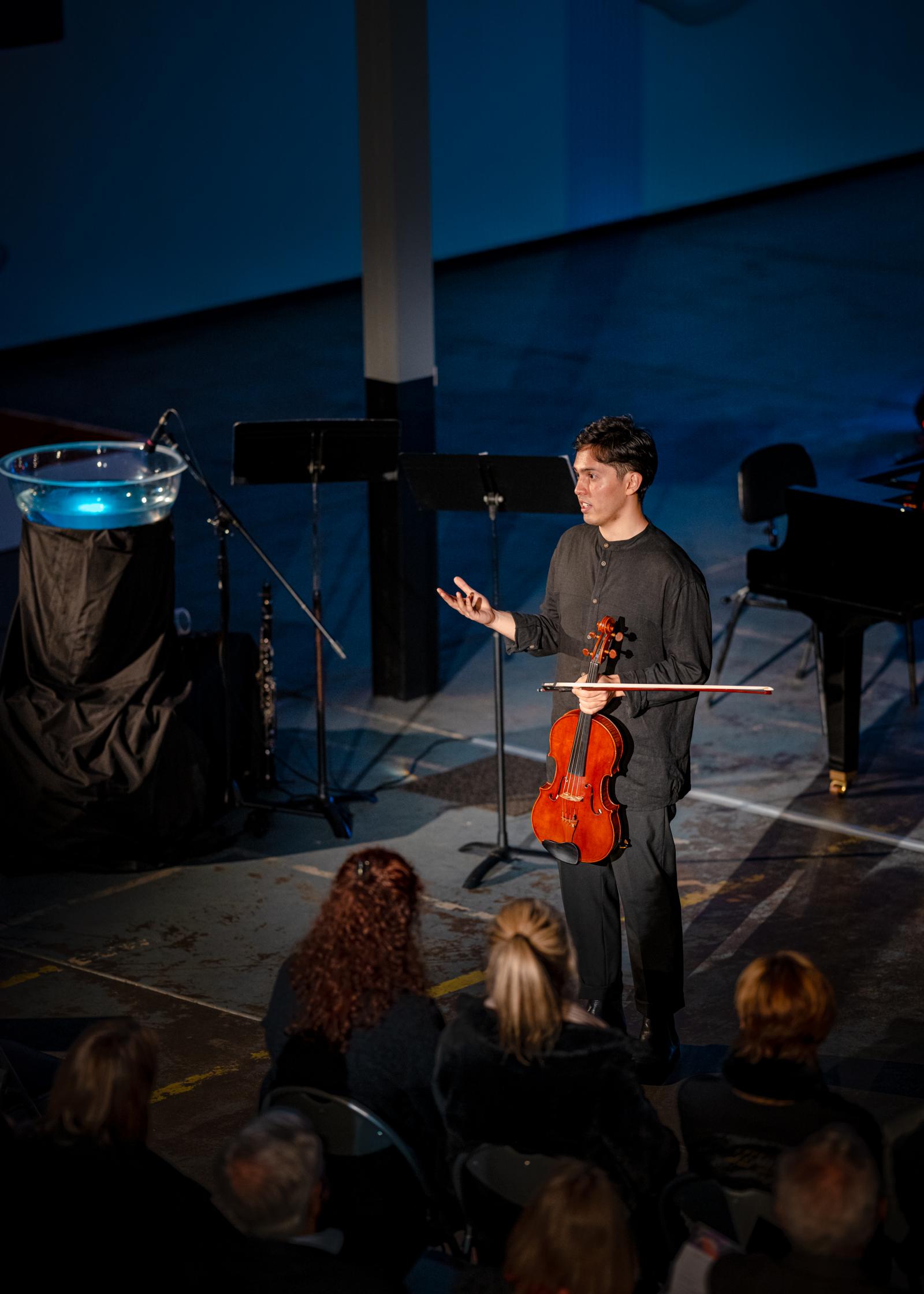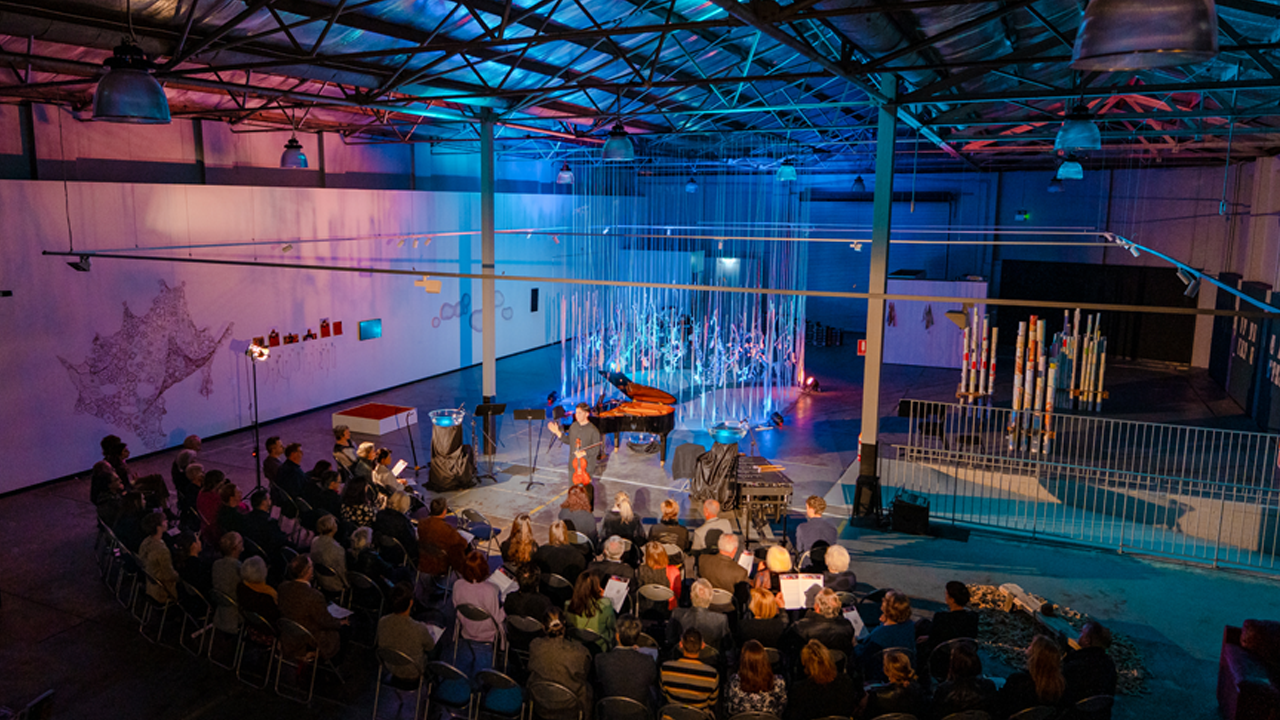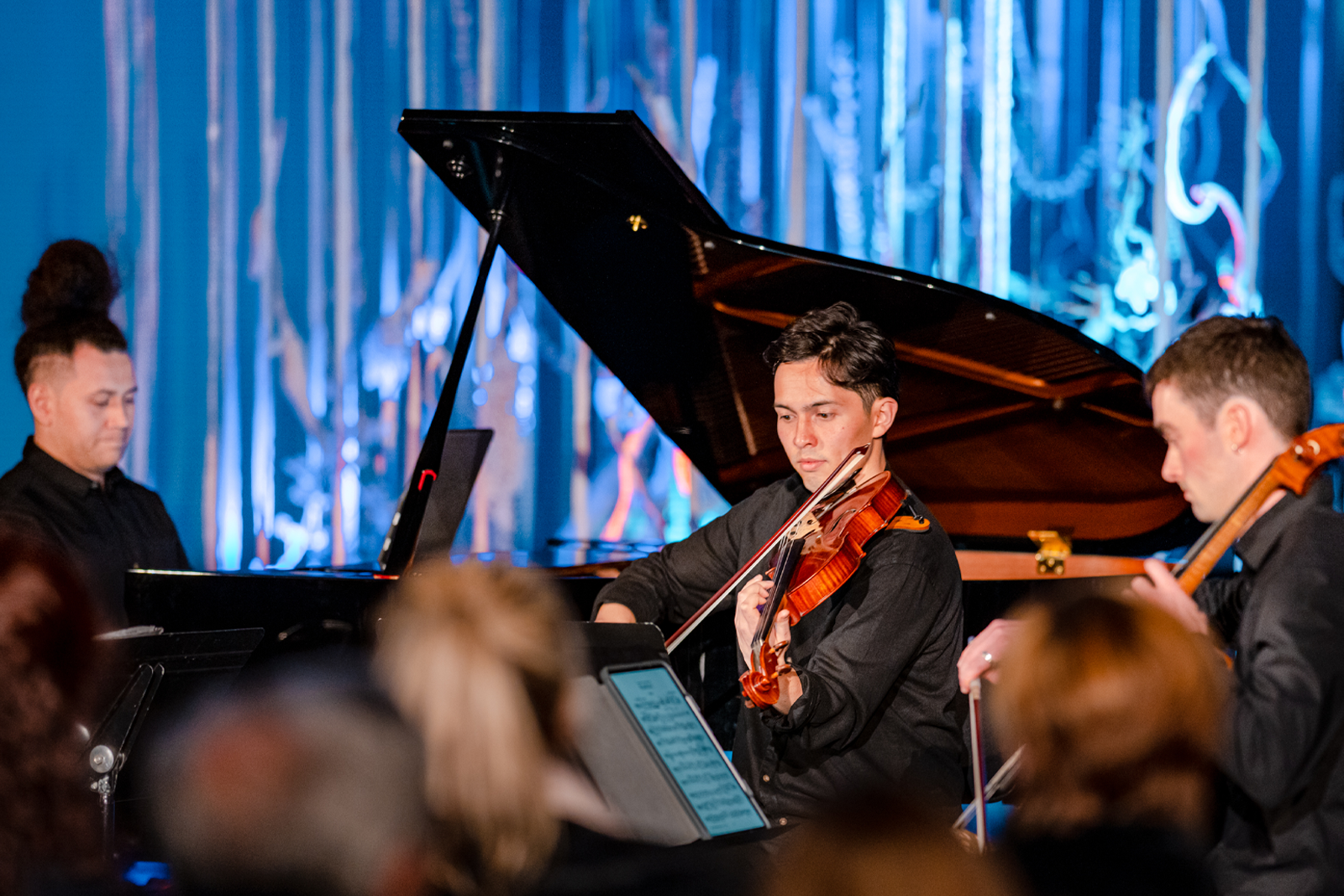Words by
Jared Yapp (viola, 2021)
13 October 2021
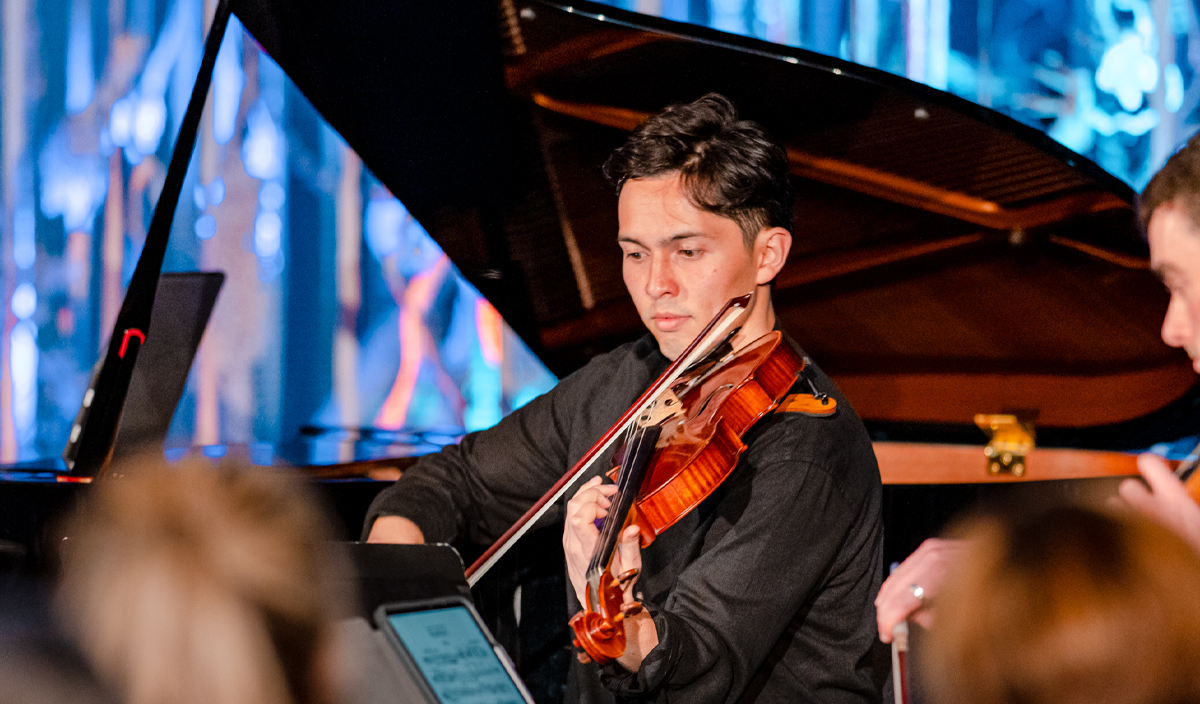
Jared Yapp (viola, 2021)
On the 13th of July, in a relatively free Melbourne, I woke up at 8am with a vague sense of uneasiness about a potential lockdown. By 10:15am I was on a flight home to Perth. Having caused a sensational amount of chaos in my wake, I arrived home completely flustered wondering, ‘What on earth have I done? What am I going to do now?’ It turned out the lockdown was two days away, so my bet paid off.
But I still had the problem of what I was actually going to do in Perth.
So I made a deal with myself: stay for six weeks and put on a concert, while (and where) I can. I’m still here, and the concert was a bit later than expected, but I managed to pull it off.
The first question you ask yourself when you want to gather people together for a concert or a picnic, is ‘What’s the purpose?’ For me, that purpose was to put a full stop to my time at ANAM. To say goodbye, to say thank you, and to do all of that by making good music.
It was serendipity that I happened to meet Janet Holmes à Court - ANAM board member and long-time supporter of the Arts - at a WASO concert shortly after my arrival. We got to chatting about my last few months at ANAM, and she suggested a concert in her gallery in West Perth - and I said ‘Ok, I’ll make that happen.'
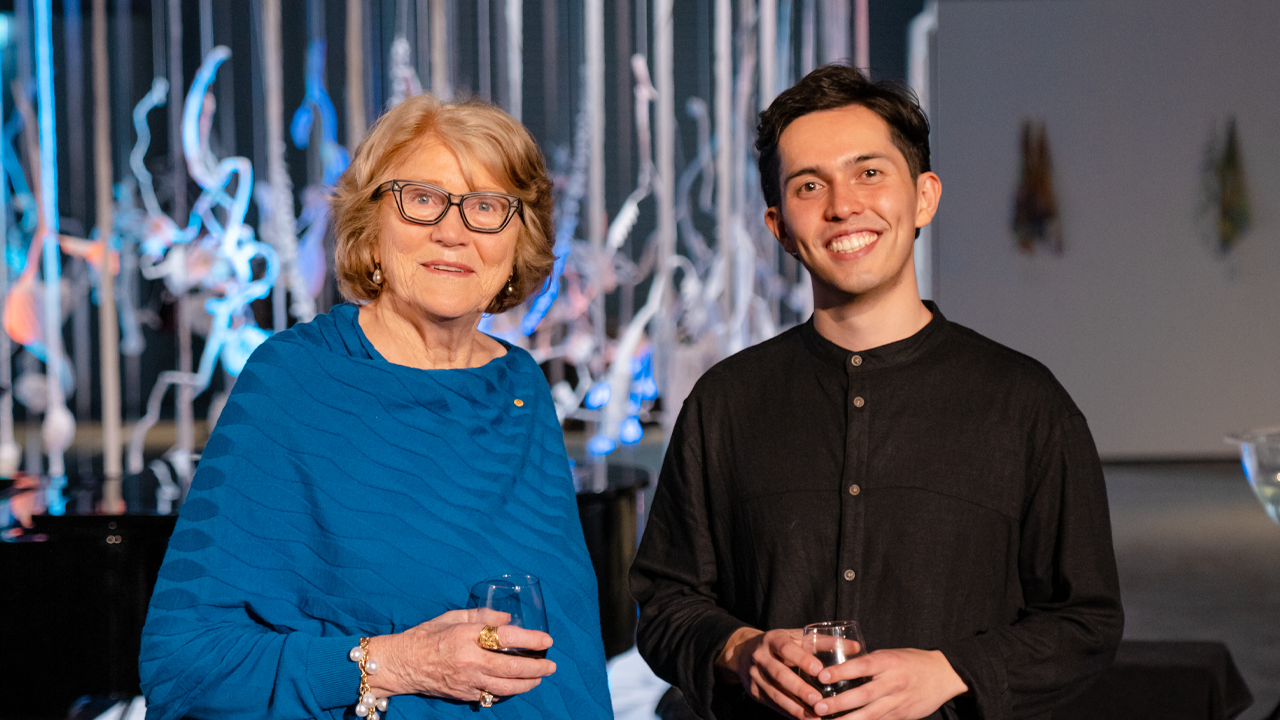
Jared with ANAM Board Member, Janet Holmes à Court
The concert ended up being a way to say thank you to some ANAM donors who generously supported my last few months at ANAM, a time known as the Seventh Semester. It was also a way of bringing together many others who have supported ANAM and me personally in different ways.
Six musicians were involved: two Seventh Semester musicians, myself and Jeremy Garside (cello, 2021), and four ANAM alumni, Thea Rossen (percussion, 2016), Ashley Smith (clarinet, 2010), Alexandra Isted (violin, 2017) and Liam Wooding (piano, 2020). Each of them truly ANAM success stories, and all happily agreed to perform in this concert - an absolute dream team of musicians.
But concerts are more than just showing up to play. Is there enough lighting? Where will the piano come from? Who should we invite? How many chairs are there? Are they the right sort of chairs? These are all questions I had to answer largely by myself, and I enjoyed every second of it. (The piano came from my house, by the way.)
Planning a concert is sort of like throwing darts from 100km away, and each of them has to arrive at 7pm on event night, right in the centre of the bullseye. This is truly thrilling, but you have to take control and gently guide each dart as it arrives, and also not flinch as 40,000 terrifying sharp objects come hurtling towards you.
One of those darts was thrown three and a half years ago when I first started at ANAM. I not only needed to be able to draw up a run sheet for the concert, I also needed to play in it.
The ANAM experience is truly unique, and I could - and often do - talk for a long time about it. A theme that often comes up is the intensity of the program, and how that impacts you as a musician. A typical (pre- COVID) ANAM week is not knowing what music you’re playing on a Tuesday, and on Friday performing it at the Melbourne Recital Centre. You’ve got two lessons in a week, a bunch of classes - oh, and your recital is next week, as are the other two you’re also playing in. Each performance has to be outstanding, and each has to look easy.
You cannot help but get better under this kind of pressure. It’s exhilarating. It’s frustrating. It’s profound. It’s a blur. All of this prepared me for the fact that playing my instrument has to be the easiest part of my job as a musician. Because after ANAM, that job now required me to climb up ladders setting up lighting rigs in art galleries for a concert that I have organised myself.
ANAM showed me what high quality music making looks and feels like. It taught me that I’m capable of so much more than I think, especially when I don’t believe it. It taught me to trust and foster my own creativity, and showed me why that is important.
This ANAM experience can only truly happen in person and this is why I am so thankful for the extra semester I received after my final and most crucial year. The year that was stolen by the pandemic. Thank you to everyone who heard us and understood our situation, and thank you to everyone who enabled this special moment in time. You cannot know how deeply we all appreciate your support, just as we cannot know how truly privileged we are to receive it.
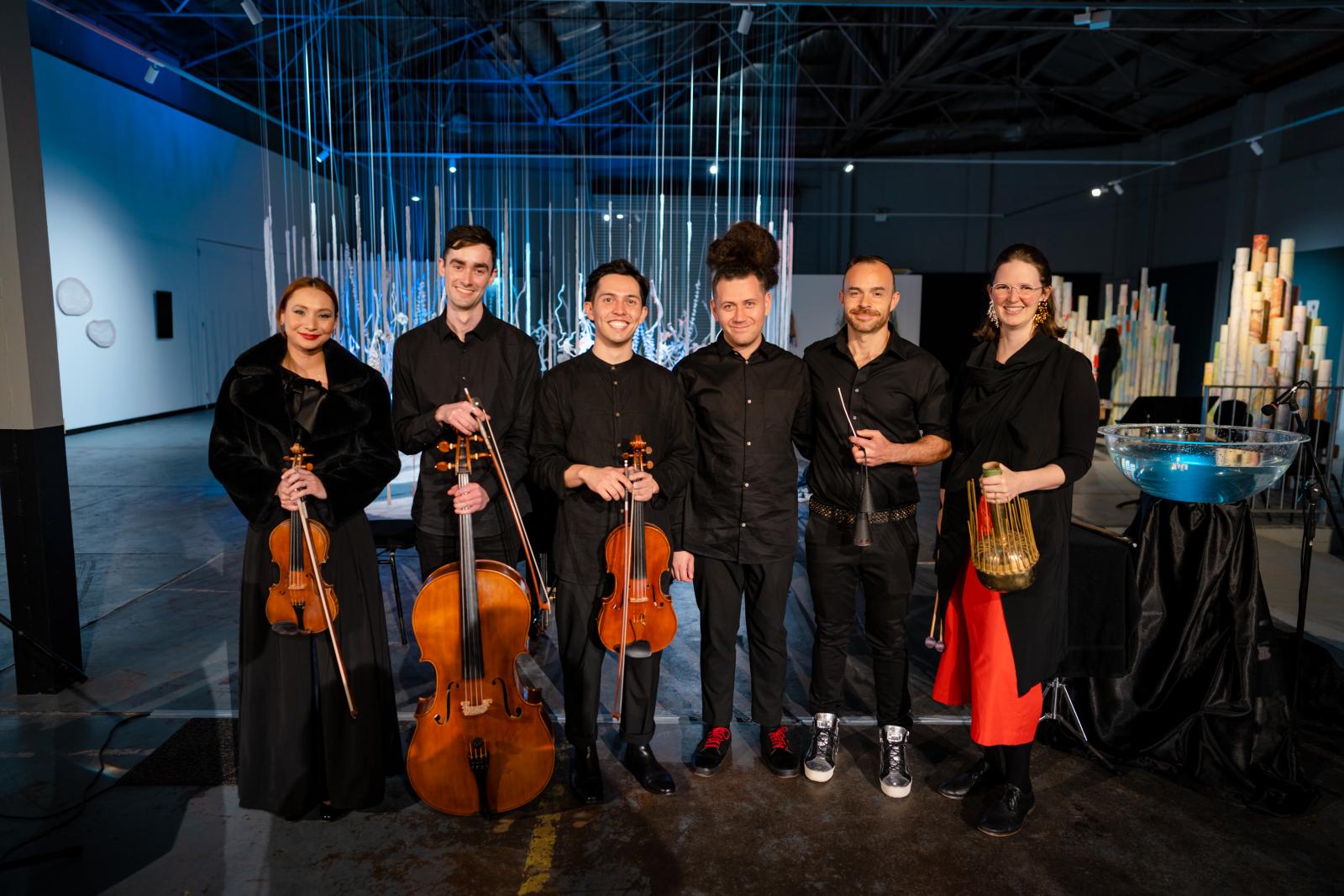
(L-R) Alexandra Isted (violin, 2010), Jeremy Garside* (cello, 2021), Jared Yapp* (viola, 2021), Liam Wooding (piano, 2020), Ashley Smith (clarinet, 2010) and Thea Rossen (percussion, 2016)
*Seventh Semester Musician
I’d like to finish with an image that came to me while I was sitting on the steps of the South Melbourne Town Hall in 2019 recuperating after some rehearsal I probably could have prepared better for.
When you come to ANAM, you arrive holding a flame which is who you are, as an artist and as a person. This flame will be tested by a hurricane made up of hundreds of voices each telling you their own, often compelling, opinion. The challenge is letting your flame dim enough that it can be reignited in different ways by these voices, but not enough that it ever goes out. By doing this, you learn what fuels your flame and what diminishes it, leaving you with a torch robust enough to light any path you could possibly encounter. And ideally you don't burn anyone in the process.
Photo credit: Andrew Clarke
